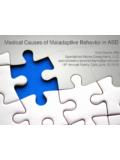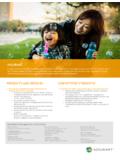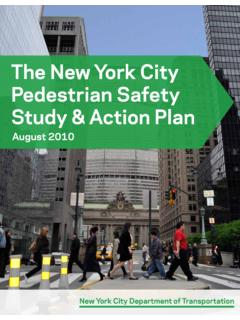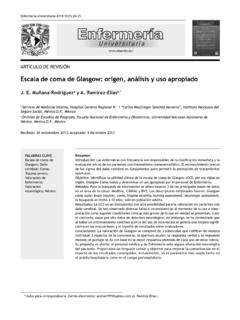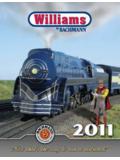Transcription of Autism spectrum disorders: an overview on …
1 UPDATE ARTICLEA utism spectrum disorders : an overview on diagnosis andtreatmentHelena Brentani,1,2 Cristiane Silvestre de Paula,3,4 Daniela Bordini,3 Deborah Rolim,2 Fabio Sato,2 Joana Portolese,2 Maria Clara Pacifico,2 James T. McCracken51 Department of Psychiatry, School of Medicine, Universidade de Sa o Paulo (USP), Sa o Paulo, SP, spectrum Program,Institute of Psychiatry, School of Medicine, USP, Sa o Paulo, SP, and Adolescent Psychiatry Unit, Department of Psychiatry,Universidade Federal de Sa o Paulo (UNIFESP), Sa o Paulo, SP, Program in Development disorders , Health and BiologicalScience Center, Universidade Presbiteriana Mackenzie, Sa o Paulo, SP, of Psychiatry and Biobehavioral Sciences,University of California, Los Angeles, CA, developmental disorders are now commonly referred to as Autism spectrum disorders (ASDs).
2 ASDs present with a range of severity and impairments, and often are a cause of severedisability, representing a major public health concern. The diagnostic criteria require delays orabnormal functioning in social interaction, language, and/or imaginative play within the first 3 years oflife, resulting in a deviation from the developmental pattern expected for the age. Becauseestablishing a diagnosis of ASD is possible as early as 18-24 months of age, clinicians should strive toidentify and begin intervention in children with ASD as soon as signs are manifest. Increasing effortsare underway to make ASD screening universal in pediatric healthcare. Given the crucial importanceof early identification and multiple modalities of treatment for ASD, this review will summarize thediagnostic criteria, key areas for assessment by clinicians, specific scales and instruments forassessment, and discussion of evidence-based treatment programs and the role of specific drugtherapies for symptom :Autistic disorder; pervasive development disorders .
3 diagnosis , treatmentIntroductionAccording to the American Psychiatric Association sDSM-IV,1the category of pervasive developmentaldisorders (PDDs) includes autistic disorder, Asperger sdisorder, pervasive developmental disorder not otherwisespecified (PDD-NOS), childhood disintegrative disorder(CDD, Heller s syndrome), and Rett s disorder. Thisgroup of disorders is characterized by a shared spectrumof qualitative impairments in social interaction, associatedwith varying degrees of deficits in communication andmarked repetitive behaviors and restricted are now commonly referred to as Autism spectrumdisorders (ASDs). Diagnosing ASD requires a compre-hensive, systematic, and structured approach.
4 Besidesmeeting the goal of identifying the disorder, the diagnosticassessment provides important information on the child srelative strengths and weaknesses, identifies whichmaladaptive behavior and comorbid difficulties are pre-sent, clarifies the impact of the child s condition on thefamily, and benchmarks the developmental skills of thepatient. In this way, the assessment should establish aroadmap for treatment by identifying the capabilities andchallenges for the child and providing useful informationon the needs and skills that must be addressed byintervention. Because establishing a reliable diagnosis ofASD is possible as early as 18-24 months of age,clinicians should strive to identify and begin interventionin children with ASD as soon as signs are pioneering epidemiologic study in Autism wasconducted by Victor Lotter in the 1960s in conducted after the 1990s detected estimates ofautistic disorder prevalence between 10 and 16 per10,000 inhabitants, while the current estimated rates ofPDD are approximately 60/10,000,4,5representing anearly 10-fold increase compared to earlier reports inthe literature.
5 Epidemiologic surveys from around theworld have found individuals with ASD in all studiedregions, and with roughly similar prevalence is routinely found to be the most frequent diagnosis (3/1,000), followed by autistic disorder (2/1,000), whileAsperger s disorder is significantly less common (6/10,000). Rett s disorder and CDD are very rare (2/100,000).7A recent study by the Centers forDisease Control Prevention (CDC), using a surveillancesystem, found an overall prevalence of approximately 1%for ASD in several regions of the United four studies presenting epidemiological data fromLatin American countries have been Brazil,Correspondence: Helena Paula Brentani, Child and AdolescentPsychiatry, Universidade de Sa o Paulo (USP), Rua Dr.
6 Ov dio PiresCampos, s/n6, CEP 05403-010, Sa o Paulo, SP, : Brasileira de Psiquiatria. 2013;35:S62 S72 2013 Associac a o Brasileira de pilot study of the prevalence of ASD was conducted at alocal administrative area in the state of Sa o Paulo. Thestudy included 1,470 children aged 7 to 12 years old andwas based on a combination of standardized instrumentsand clinical assessments using the DSM-IV criteria. Thesurvey estimated a prevalence of ASD of , and somehypotheses were raised to explain this low frequency, themain one being the small sample together,the combined prevalence of ASDs makes them one of themost frequent neurodevelopmental disorders , represent-ing a major public health criteriaThe current specific criteria for ASD diagnoses are drawnfrom three domains:i)Impaired social interaction, as shown by: a) markedimpairment in the use of non-verbal communicativebehaviors (such as eye-to-eye gaze, facial expression,body postures); b) failure to develop age-appropriatepeer relationships; c) a lack of spontaneous sharing ofaffect and interests with others.
7 And d) lack of social oremotional reciprocity (limited interest in or awareness ofothers reactions, interests, or feelings).ii)Qualitative impairments in communication skills, asshown by: a) delays in, or lack of, language acquisition(absence or reduced frequency of early languagedevelopment as babbling and playing with sounds,and later, absence of phrase speech); b) inability toinitiate or maintain a conversation; c) stereotyped andrepetitive use of language or idiosyncratic language(echolalia, oddly formal speech, neologisms); and d)lack of development of age appropriate pretend play orsocial imitative )Presence of restricted and repetitive patterns ofbehavior, interests and activities, as shown by: a)pronounced preoccupation with one or more unusualand restricted interests.
8 B) inflexible adherence tospecific routines or rituals; c) motor stereotypies (handflapping, finger flicking, pacing, and jumping); and d)preoccupations with parts of order to meet full criteria for autistic disorder, theindividual must have evidence of a total of six or moreitems from domains i), ii), and iii), with at least two itemsfrom i), and one each from ii) and iii). Individuals withAsperger s disorder by definition are considered to haveno clinically significant language delays, and mustmanifest two or more criteria from i) and at least onecriterion from repetitive, restricted interests (iii).Thediagnosis of PDD-NOS is considered a form of sub-threshold Autism or Autism with atypical features inindividuals with severe andpervasive social commu-nication impairments and/or impairing restricted inter-ests and repetitive behaviors, but where the requiredcriteria for autistic disorder or Asperger s disorder is notmet.
9 Rett s disorder and CDD have distinct develop-mental and behavioral profiles (severe deceleration ofmotor skills and head growth between 5 to 30 months forRett s disorder and marked, pervasive developmentaland behavioral deterioration after apparently normaldevelopment for at least 2 years in CDD).The diagnostic criteria require the appreciation ofdelays or abnormal functioning in social interaction,language, and/or imaginative play within the first 3 yearsof life, resulting in a deviation from the developmentalpattern expected for their , a priority is toidentify early signs of ASD and initiate interventions assoon as possible, as it is widely recognized that earlyintervention results in a better of infants at high-risk for Autism by virtue ofhaving an older affected sibling, and retrospectiveexaminations of first-birthday videos in children laterdiagnosed with Autism confirm that, in some children.
10 Thedelays and deviations of ASD are identifiable between 6and 12 months of age,12becoming more stable after 18months of diagnoses at 24 months of agehave been found to be stable over follow-up periods ofseveral years. Although the first symptoms described inthe literature are related to social communication, theselongitudinal studies have shown that infants with othermore non-specific signs not related to sociability can beidentified even earlier. These signs include irritability, lackor excess of responsiveness, changes in activity level,and deficits in gross motor from the CDC Autism surveillance network notedthat more than 50% of parents of children with Autism hadvoiced concerns about their child s development orbehavior in the first 12 months of life, and that 80% hadidentified concerns about language development by are strongly encouraged to take noteof such early concerns and possible deviations andconsider intervention, rather than to suggest DSM-5 has just been officially released and in itsmost recent text renames the category as ASD.











